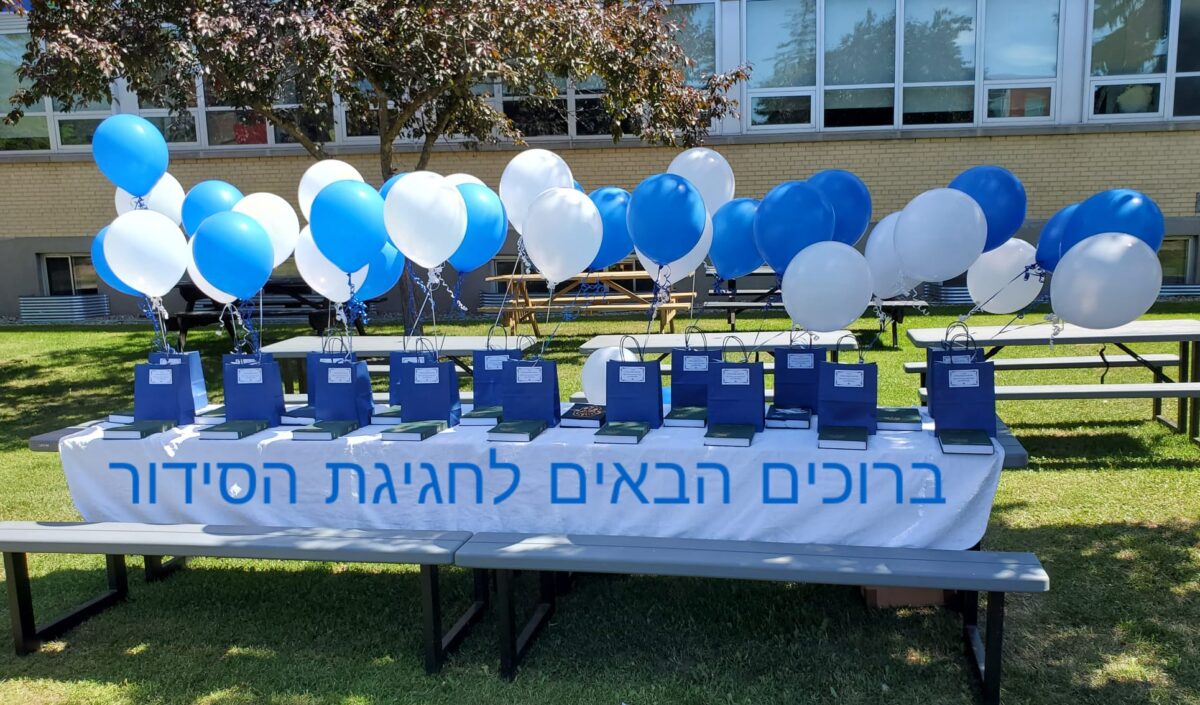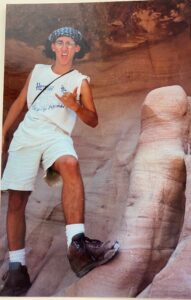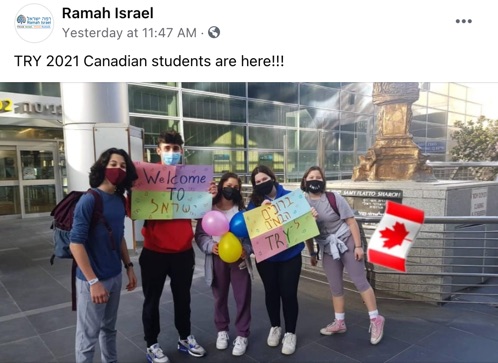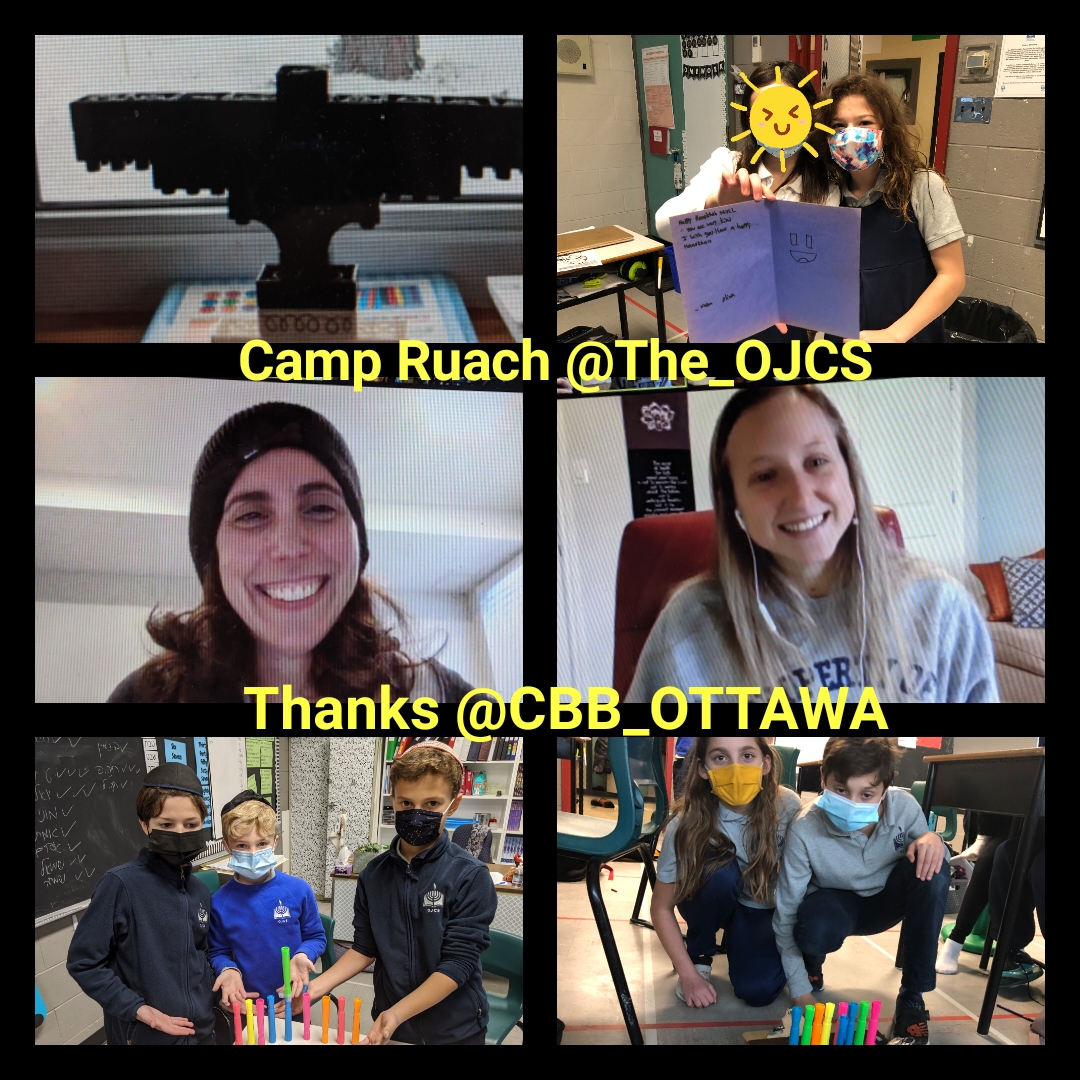[This is the brief dvar that I shared with Kitah Bet, their parents, grandparents, and special friends on Friday, June 4th in honour of their Chagigat Ha’Torah (Torah Party).]
As I look at each box on my screen, representing teachers, students and their families, extended families and friends, and so on, I can’t help thinking about the distinction between “grasshoppers” and “giants” from this week’s parashah.
This week in Parashat Sh’lakh we get the famous story of the Twelve Spies sent by Moshe into Eretz Yisrael to bring back a report on the land they are poised to enter. The majority of the spies report back that the land is filled with giants – Nephilim – and, thus, they should not attempt to enter and conquer. The people are filled with fear, God is angered, and as a result the people are punished with forty years of wandering – until the entire generation of this episode dies out. There are two reasons typically cited for this punishment. The first is their lack of faith in God. Remember, these are the same people who witnessed both Yetziat Mitzrayim (the Exodus from Egypt) and Matan Torah – how could they have lived through those events and still doubted God’s ability to lead them safely to Eretz Yisrael? But it is the second one that I want to zoom in on (pardon the expression!) today. The Torah says in B’Midbar 13:33 that the spies report back “…we looked like grasshoppers to ourselves, and so we must have looked to them”. It wasn’t that B’nei Yisrael lacked faith in God; B’nei Yisrael lacked faith in themselves.
I’ve been thinking a lot about “grasshoppers” and “giants” during this spring’s pivot back to distance learning. What this moment has asked of teachers, students, parents and families has sometimes felt so giant that it would have been easy to lose faith in each other and in ourselves. One of our school’s “North Stars” is that we “each own our own learning”, but we never meant it literally. Yes, we believe a school’s job is to foster self-directedness in its students, but not to this extent. At various points going back to the beginning of the pandemic, it would have been easy for us to look out into the land of hyflex and distance learning, say “This is too big!” and refuse to enter or engage. It would have been perfectly understandable.
But each and every day, I see the grit, the resilience, the care, and the love that each sacred partner to this holy endeavor – student, teacher and parent – brings and it fills my heart with gratitude and nourishes my soul. Yes, there are moments and days when we are frustrated or overwhelmed. Yes, the work is taxing and tiring. Yes, as time goes on it gets harder to find those moments of joy and meaning that make it all worthwhile. The size of your box may make you look like grasshoppers, but the heart you have shown this year proves you are truly giants; giants who have behaved with heroic courage while facing challenges unimaginable just a couple of years ago.
And that brings us to today.
We celebrate our children’s first accomplishments in the study of Torah with the (symbolic) gift of Torah. Your choice to provide your children with a Jewish day school education forges the link between the Torah given at Sinai with the Torah your children learn and live today. Your choice connects your children to the generations who came before and to those yet to come. Your choice joins your family story to the larger Jewish story. Your choice honours the Jewish past and secures the Jewish future through the learning and experiences you have made possible for their Jewish present.
That is why, as was true with the Siddur they received at the end of Kitah Alef, the Torah they receive at the end of Kitah Bet is not a trophy to sit upon a shelf, but a tool to continue the Jewish journey they are just beginning. It is our hope and our prayer that the work we have begun together as partners – parents and teachers; home and school – continue in the years ahead to provide our children with Jewish moments of meaning and Jewish experiences of consequence so that they can continue to receive and accept Torah in their own unique way, infused by a love of Judaism, informed by Jewish wisdom and aligned with Jewish values.
Thank you.
Thank you to the parents who have sacrificed in ways known and unknown to give your children the gift of Jewish day school. Before COVID-19, we would describe teachers as in loco parentis – teachers who serve as stand-ins for parents at school. Well, in this time of distance learning, we can aptly describe parents as in loco teacheris, and thank them for the extraordinary effort that goes into schooling-at-home. Thank you for entrusting us with the sacred responsibility of educating your children. It is not something that we take for granted.
Thank you to the teachers who give of their love, their time and their talent each and every day. On a day like today, special thanks to Morah Batya who has poured herself into your children and into this day. Our teachers play a significant role in shaping our children’s stories and we are grateful for the care they attend to that holy task.
Thank you to the students who show up each day as their authentic selves, even on Google Meet! Your passion and enthusiasm for learning and for Judaism is why we wake up each day at OJCS with a spring in our steps and a smile on our faces.
My prayer for you is that you always see yourselves as the giants you are…
Mazal Tov!




 local Federation’s teen tour. It was an extraordinary experience and I met friends that summer that I am still close with today. I returned to Israel in 1992 as part of a
local Federation’s teen tour. It was an extraordinary experience and I met friends that summer that I am still close with today. I returned to Israel in 1992 as part of a 








